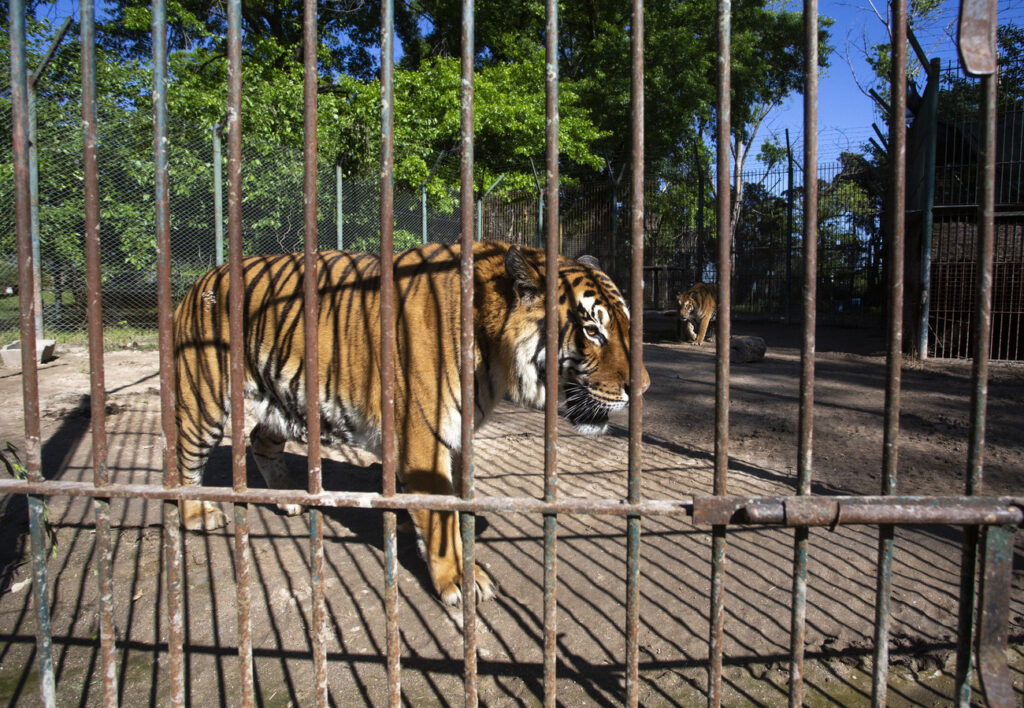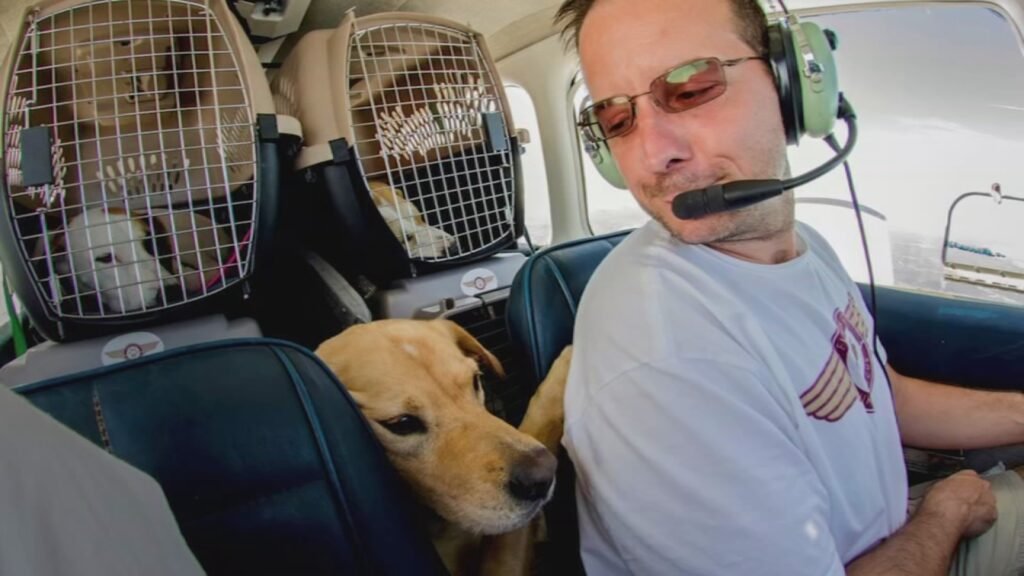Every now and then, a rescue mission reframes the story. It pulls into sharp focus the pain animals endure, the dedication of rescue teams, and the possibility of healing when intervention happens in time. This is precisely the role played by the mission at the former FOUR PAWS‑managed site in Argentina — the animals’ suffering sparked action and their recovery signals both what’s possible and what still must change.
FOUR PAWS is conducting an emergency mission in Argentina to rescue and provide urgent veterinary care for over 60 big cats and two bears from the former Zoo Luján. The mission began in October 2025 and is considered one of the organization’s largest and most complex to date.
Background of the Mission
- Location: The former Zoo Luján, located in the province of Buenos Aires. The zoo was shut down due to animal welfare concerns, but the animals were left behind.
- Immediate responsibility: In September 2025, FOUR PAWS took over legal and financial responsibility for the wild animals still living at the site.
- Substandard conditions: Many animals were found in heartbreaking conditions, living in overcrowded, cramped enclosures with little to no enrichment and inadequate care.
Mission progress
- Veterinary assessments: Since October 2025, a large team of veterinarians and experts, led by Dr. Amir Khalil, has been on-site conducting health checks on the big cats and bears.
- Urgent care provided: Several animals have already received critical treatment. A tigress named Luna was treated for open wounds, and another tigress, Flora, received relief for severely ingrown claws.
- Storm-related setbacks: The veterinary team faced challenges during the initial assessments, including a storm that turned the area into mud, but they continued their work.
- Relocation of bears: Two brown bears, Gordo and Florencia, are scheduled to be relocated to the FOUR PAWS BEAR SANCTUARY Belitsa in Bulgaria, where they will have a species-appropriate home.
- Planning for long-term solutions: The veterinary assessment is just the first step. The ultimate goal is to find species-appropriate, long-term solutions for all the animals.
Broader government agreement
- Memorandum of Understanding (MoU): This mission is the first step in a larger agreement signed in July 2025 between FOUR PAWS and the Argentine government.
- National reforms: The MoU commits Argentina to strengthening animal welfare standards and working towards ending the private keeping and commercial trade of big cats across the country.
- FOUR PAWS’s role: The organization will act as a consultant to provide expertise to legislators and help assess conditions and relocate animals as needed.
The Moment of Need
On the outskirts of Buenos Aires at the closed Zoo Luján, tigers, lions and bears languished for years in cramped, neglected conditions with little oversight. KCRA After years of persistent decline, in 2025 a high‐level emergency mission was launched, recognizing that every day these animals were left waiting meant greater damage to their health, behaviour and lifespan. Four Paws+1
The mission’s opening phase involved intensive veterinary assessments, urgent treatment, and a plan for long‑term relocation. Among the many animals, two brown bears and dozens of big cats were evaluated, rescued from the brink of irreversible harm.
The Rescue in Motion
The rescue team moved quickly into action: teams of veterinarians and wildlife specialists operating on‑site began working through each animal’s condition, treating wounds, infections, malnutrition, dental issues and behavioural trauma caused by years of confinement. Four Paws+1
One tigress had suffered severe tail and paw injuries and underwent surgery; another lion required dental care after cages and flooring damaged its teeth. Bears were found to be severely overweight yet medically neglected, creating a complex scenario of both excess and deprivation.
This mission was not standard. It was described as “one of the biggest and most complex” that FOUR PAWS had ever undertaken, given the number of animals, the severity of neglect, and the urgency of the timeline.
What This Rescue Illustrates for the SAN Rescue Network
- Alertness is essential. The call‑to‑action came from someone spotting the risk and mobilizing teams. Rescue is not simply reactive—it becomes proactive when alert networks exist.
- Collaboration fuels action. From veterinarians to legal teams, from local officials to NGOs, this rescue needed many moving parts. That’s exactly what our Rescue Network archives highlight. (Explore more at: https://sustainableactionnow.org/rescue-network/)
- Recovery is part of the story— not just the rescue. The effort doesn’t end when animals are removed or initial treatment given. Rehabilitation, enrichment, long‑term care and appropriate relocation matter just as much.
- Prevention and awareness are critical. Each rescued animal begs the question: Could the suffering have been prevented? What system failed? What community alertness was missing? These are the gaps our network aims to close.
How You Can Engage Right Now
Advocate: use the example of this mission to push for policy change — in the case of Argentina, the mission includes a Memorandum of Understanding to end commercial trade and private ownership of big cats.
Stay tuned to our Rescue Network section where we track such stories of intervention, healing and adoption: https://sustainableactionnow.org/rescue‑network/
If you witness an animal in distress — in captivity, chained, injured or neglected — report it immediately (to local authorities or welfare organizations).
Support groups and missions like this rescue: medical care, food, transport, rehabilitation all demand funding and volunteers.
Share rescue stories. The more people are aware, the more pressure builds toward reform and resource allocation.
A Call to Strengthen the Network
As you read this, somewhere a wild animal may be injured, abandoned, or waiting for help. The transformation of these big cats and bears from neglect into possibility is not unique—it can happen more often, with more support, more awareness.
At SAN, we track, we share, we mobilize. We rely on you—citizens, donors, volunteers, policy‑advocates—to plug into the network. Visit our Rescue Network page (https://sustainableactionnow.org/rescue‑network/) to see how you can plug in. Join field teams, offer foster space (where applicable), share stories, donate. Because every action counts.
The story of this mission tells us that rescue saves lives, recovery restores them, networked action sustains them. Act now so that we don’t wait until “every day counts”—we act when every day matters.


